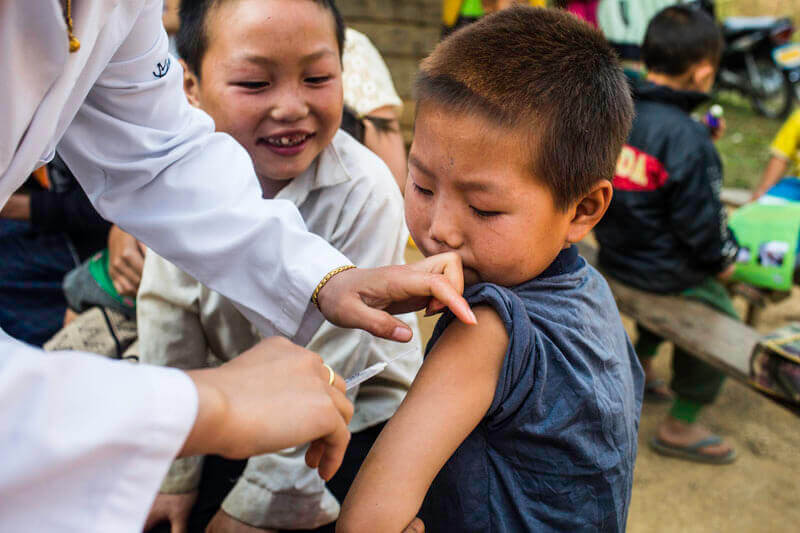The answer is yes according to a group of 35 leading scientists who have come together to explore new strategies to accelerate vaccine development for
deadly diseases such as malaria, HIV, tuberculosis (TB), and cancer.
These scientists—who are part of planning a new initiative called the Human Vaccines Project (HVP)—hope that just as the Human Genome Project
successfully mapped the building blocks of human life and led to numerous drug development and medical breakthroughs, a Human Vaccines Project could
decipher the “human immunome”—providing a road map of the human immune system that would help scientists accelerate the development of vaccines
for existing and emerging diseases. On Wednesday, Nature Immunology released a paper by researchers exploring the HVP that outlined the challenges to vaccine development, the opportunities presented by recent technological advances,
and a broad vision for HVP’s future work.

- Could mapping the “human immunome” lead to the next generation of vaccines? Scientists hope yes. Photo: PATH/Aaron Joel Santos
“A Human Vaccines Project focused on solving the major scientific problems impeding vaccine development could be transformative for efforts to help prevent
these devastating infectious diseases as well as certain cancers,” said Wayne C. Koff, Chief Scientific Officer of the International AIDS Vaccine Initiative
(IAVI) and lead author of the report.
Vaccines are among the most effective interventions in the history of public health, having led to the eradication or near eradication of diseases like
smallpox and polio and the collective prevention of 2-3 million deaths per year. However, scientists have not yet been able to develop broadly effective
vaccines against a number of common and deadly diseases like malaria, AIDS, TB and cancer.
Why do vaccines for some diseases elude us?
One of the reasons is because the viruses that cause these diseases are so complex and clever. Take for example variable viruses like influenza and HIV.
These viruses behave sort of like characters from the Transformer movie. Like Optimus Prime, they constantly mutate, evolve, and change their form—making
it difficult for scientists to develop a vaccine against them.
Other viruses are just tough nuts for scientists to crack. For example, the respiratory syncytial virus (RSV)—which causes respiratory infection
in infants—has mechanisms that not only block the immune system’s ability to signal to certain cells that it has been compromised, but also alters
the immune system’s “memory” processes which typically allows it to react more quickly to subsequent exposure to the same pathogen. As a result, RSV
re-infects people throughout their lives.
Another challenge impeding vaccine development is the fact that different individuals’ immune systems respond differently to the same virus. In particular,
the immune systems of infants and the elderly behave differently than those of adults, so a vaccine that works for adults may not work for either of
these populations. In addition, our immune system can react haphazardly when it is assaulted from multiple fronts. For example, rotavirus vaccines
are more effective in the developed world than in developing countries where people’s immune systems—as a result of poor sanitation, water and
hygiene—are often already fighting off other infections.
The opportunity and vision for a Human Vaccines Project
Despite these challenges, the paper notes that scientific and technological breakthroughs over the last decade have introduced news tools and technologies
that provide an opportunity to revolutionize vaccine development. An HVP would hope to exploit these technologies to change how vaccine development
is undertaken.
Drawing a parallel to the success of the Human Genome Project, HVP envisions a large-scale, highly collaborative effort—estimated at $1 billion over
the next decade—that would bring together industry, government, academia, and nongovernmental organizations to work together to tackle the challenges
outlined above. Part of the project’s approach will be a major effort to map the “human immunome.”
What does it mean to map the “human immunome”?
The human immune system is a series of cells with receptors that recognize and respond to the introduction of foreign substances into the body. It’s a
complicated system with an enormous diversity of cells working together to weed out and attack viruses and infections.
Traditionally vaccine research has focused more on results coming from experimentation for a specific disease, rather than on understanding the underlying
principles of the immune system. Relatively little is known about the interaction of immune responses and cellular processes that provide immunity
in response to a vaccination. In the past it would have been inconceivable to try to map the immune system because of the sheer number of genetically
different cells involved, but due to improvements in genetic sequencing technologies and computer tools to manage and analyze large data sets, the
paper’s authors now believe it could be possible to figure out the sequence of all those receptor cells in the human adaptive immune system.
Like the Human Genome Project, such an initiative could take many years, but it would create an essential public tool with the potential to transform the
science of vaccine development.

